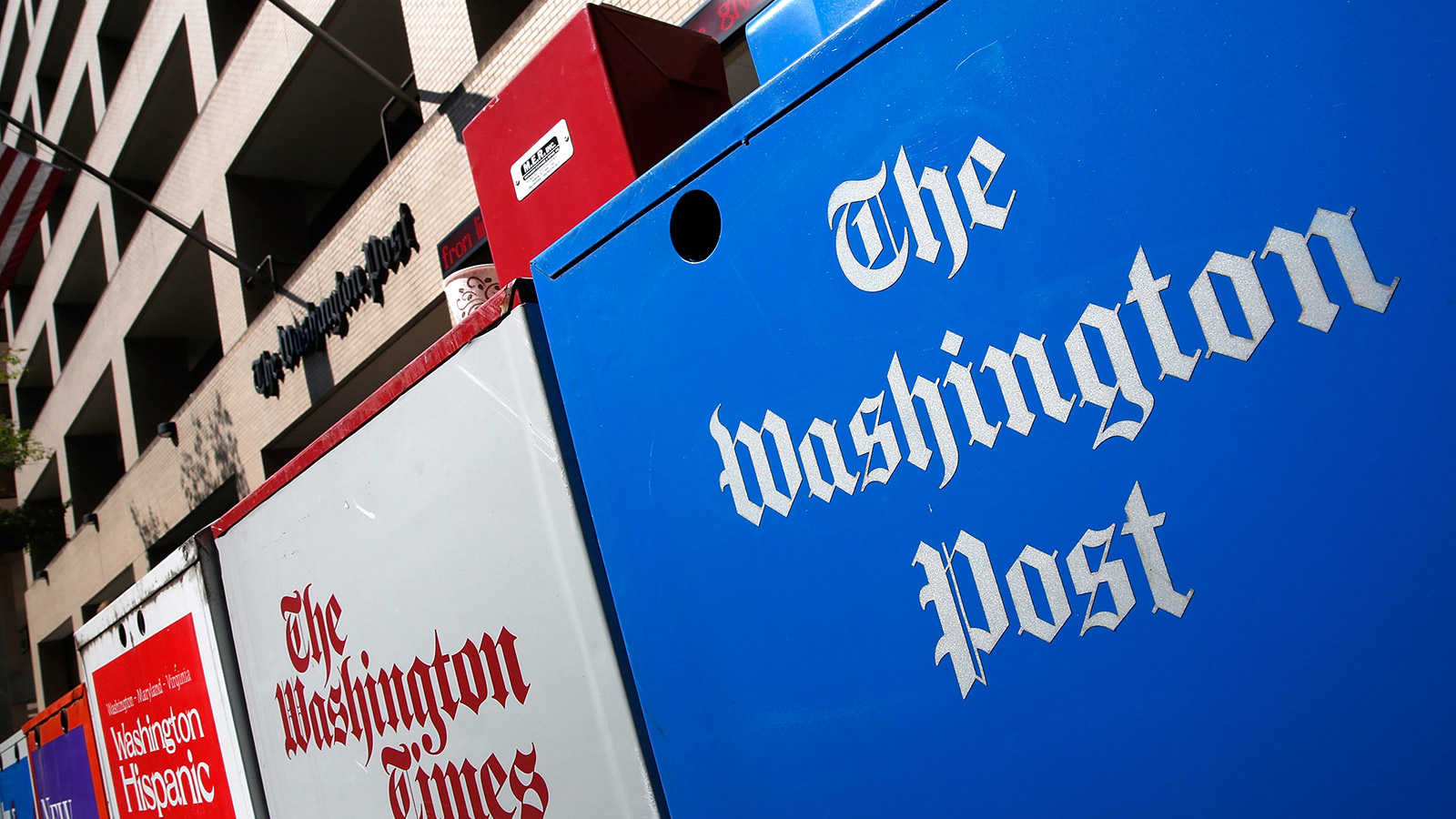In 1956, journalist Waldemar Kaempffert published an article in the New York Times warning of future environmental catastrophe — including global temperature rise — if humanity failed to curb CO2 emissions. “Such a comparatively small fluctuation seems of no importance,” he wrote. “Nevertheless, it can bring about striking changes in the climate.”
Kaempffert’s climate assertions, unfortunately, did not set a precedent for the decades of environmental coverage to come. For many years, many top media companies have neglected to cover climate change — and when they do pay attention, it’s usually only because President Trump did or said something about it.
But anecdotally, it seems like climate change coverage might be picking up steam. This past weekend, NBC’s Meet the Press devoted a full hour to climate change — a first for a weekend news program.
Then on Wednesday, the Washington Post Opinions Staff went full-out Waldemar Kaempffert and presented 11 ideas for drastically cutting greenhouse gas emissions, each one written by climate policy leaders and experts.
Great to see the climate crisis getting increased attention from major media outlets recently. Latest example: Today’s @WashingtonPost editorial on effective ideas to combat the climate crisis: https://t.co/WQTLlWZ438
— Al Gore (@algore) January 2, 2019
If you’re too busy to read the full Post article, don’t stress. We’ve got the CliffsNotes version right here:
- Pass local emission goals. Look, we all know the federal government isn’t moving on this anytime soon. The Trump administration has been systematically dismantling Obama-era Clean Air regulations and continues its love affair with coal power. So we need all levels of government and businesses to green up and curb global warming.
- Reduce the use of air conditioners, which contain hydrofluorocarbons, a more potent greenhouse gas than even CO2. “Globally, a phasedown of HFC refrigerants could avoid up to 0.5 degree Celsius of warming by 2100,” wrote Durwood Zaelke, president of the Institute for Governance & Sustainable Development.
- Make electric vehicles easier to use and more affordable. Electric vehicles need not only be the way of the Silicon Valley. Federal tax credits, expanded infrastructure (i.e. charging stations), and incentive measures could make EVs the car of the future.
- Keep existing nuclear plants running… for now. Nuclear power is controversial but the Post article posits they’re necessary until more low-carbon solutions are available (lest they be replaced by natural gas).
- Design cities to encourage people to walk, not drive. How do you encourage more cyclists and pedestrians? For starters, well-lit intersections, covered bus stops with clear signage, and protected bike lanes. If you need more inspiration, check out this video from about how Grist’s very own Even Andrews (aka Umbra) gave up her vehicle.
- Curb food waste by avoiding unnecessary production. In an actual embarrassment of riches, the world lets a third of its food supply go to waste. Composting, and food recycling help place limitations what edible items end up in the landfill heap, but the best strategy is to avoid unnecessary food production in the first place.
- Incentivize carbon farming. That’s right – farming doesn’t need to lead to plumes of CO2 and pesticide runoff. With the right techniques (and legislation!), farming can give back to the earth, sequestering carbon in the soil instead of releasing it into the atmosphere.
- Secure a moratorium on new factory farms. Factory dairy and meat farms lead to a lot of earth-warming methane (and they don’t even need to report emissions). The article recommends rural communities transition to more resilient, carbon-effective agriculture models by halting new construction (and subsidization) of these massive productions, and focus on reducing overproduction at existing facilities.
- Adopt a carbon tax. Former Florida representative (and a 2017 Grist 50 Fixer) Carlos Curbelo writes that carbon taxes are “the best way to inspire such a wide-ranging, meaningful change, at the pace that we need it.” Curbelo proposes using carbon tax revenue to “robustly fund our nation’s infrastructure, help coastal communities adapt to the immediate effects of climate change and give low-income Americans and displaced workers assistance in the transition.”
- Stir up competition between electricity companies to get them to retire inefficient plants. In theory, companies will switch to cleaner fuels when they become cheaper.
- Pass a Green New Deal (aka the ‘Medicare for all’ of climate change) to get our economy to run on renewable energy. The idea, offered by 2018 Grist 50 member Varshini Prakash, is to create jobs while simultaneously prioritizing the communities most impacted by climate change.
“Radical change from one state, or even the whole United States, won’t address climate change on its own,” writes the Washington Post Opinion section staff, “but taking these actions could help start the planet down a path toward a better future.”




